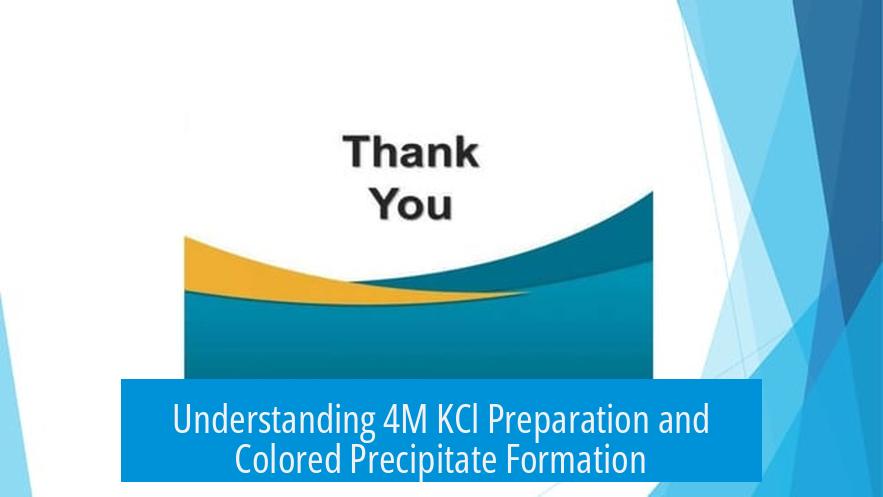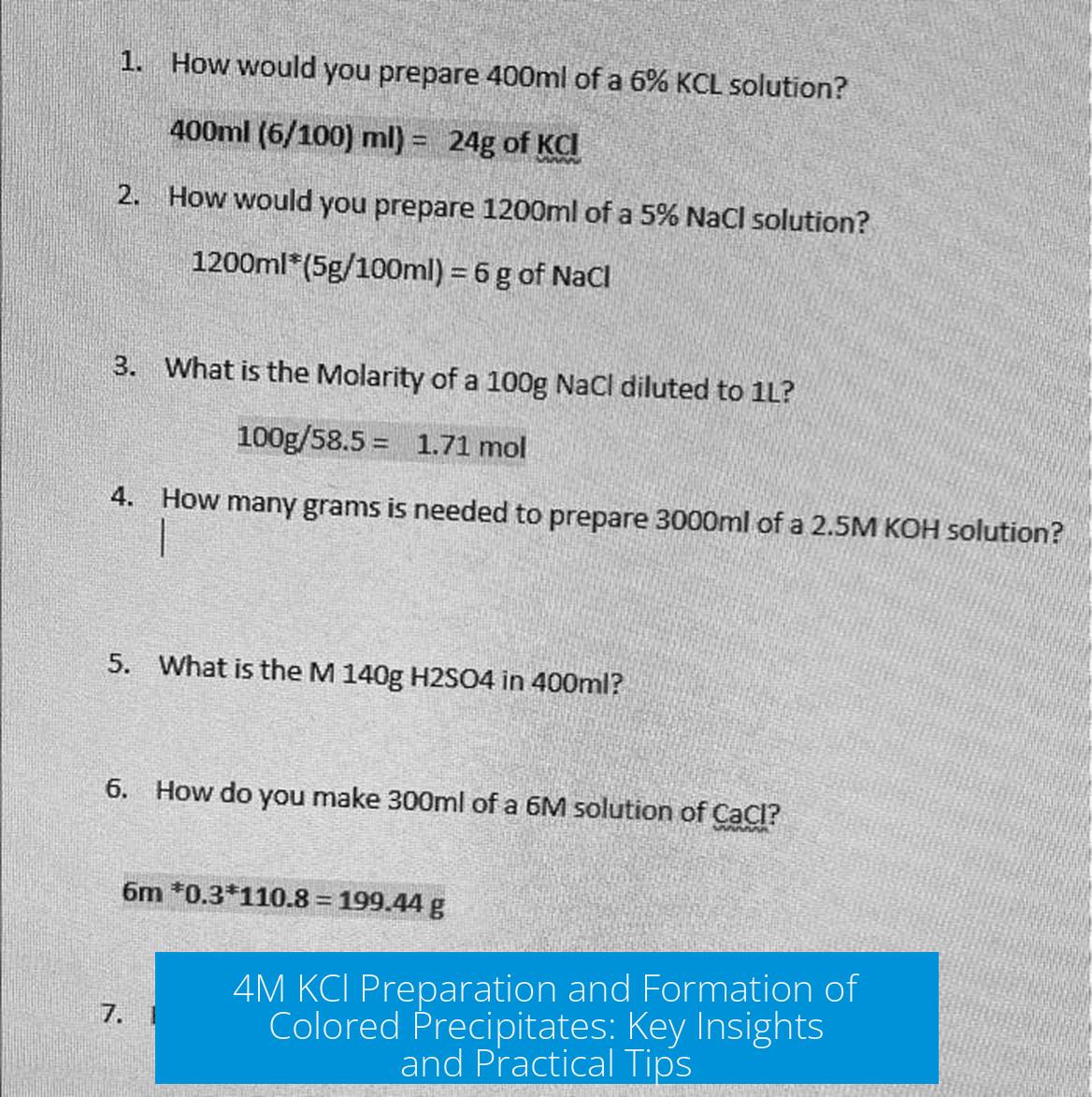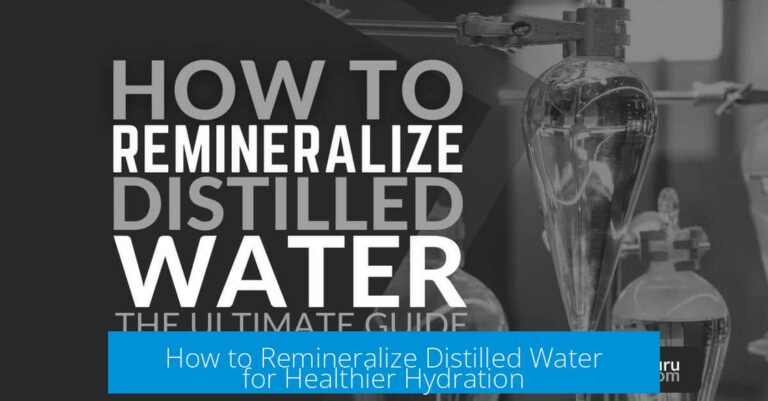Understanding 4M KCl Preparation and Colored Precipitate Formation

When preparing a 4M potassium chloride (KCl) solution, colored precipitates often indicate impurities rather than KCl itself exceeding saturation. The 4M concentration nears KCl’s solubility limit, causing potential precipitation, but pure KCl precipitates appear as white crystals, not colored solids.
Solubility and Saturation Threshold
KCl’s solubility in water at room temperature typically supports solutions up to around 4M before saturation occurs. Approaching this concentration, any excess KCl may crystallize out, especially if the solution cools or is left stagnant. Reheating and stirring the solution usually dissolves precipitates back into solution.
- Saturation limit of KCl typically hovers near 4M concentration.
- Precipitates formed by pure KCl are white and crystalline.
- Heating and mixing redissolves crystals effectively.
Colored Precipitates: Source and Identification
The appearance of colored precipitate suggests contamination. Using non-purified water, such as tap water containing dissolved iron or other metals, can react with chloride ions to form insoluble colored chlorides. This contaminant reaction creates precipitates ranging from greenish to reddish hues.
| Possible Cause | Effect on Solution | Color of Precipitate |
|---|---|---|
| Iron ions in tap water | Forms insoluble iron chloride | Reddish or brown |
| Other metallic impurities | Insoluble chloride salts | Various colored precipitates |
Importance of Water and Reagent Quality
Using high-purity or deionized water (ddH2O) is vital when preparing KCl solutions, especially at high molarity. Conductivity and total dissolved solids (TDS) measurements verify water quality. Similarly, reagent-grade KCl minimizes risk of contaminant introduction.
- Deionized or distilled water should be used exclusively.
- Check water quality by conductivity or TDS tests.
- Use analytical or reagent-grade KCl for best results.
Practical Considerations for 4M KCl Solutions
Most commercial KCl stock solutions, such as those from Sigma, typically do not exceed 3M, reflecting practical saturation limits and handling ease. For common applications like pH electrode filling or calibration, 3M solutions suffice. Preparing 4M KCl is generally unnecessary and risks precipitation and contamination issues.
“3M is easy peasy to prepare. What do you need 4M for? If it’s just for storing pH or reference electrodes, 3M works well and avoids precipitation.”
Key Takeaways
- 4M KCl solution approaches saturation; pure KCl precipitates are white, not colored.
- Colored precipitates indicate contamination, often from metallic impurities in water.
- Use high-purity water and reagent-grade KCl to prevent unwanted precipitation.
- 3M KCl solutions are common and practical; 4M solutions are rarely necessary.
- Reheating and mixing can dissolve precipitates if involving pure KCl crystals.
Why does a colored precipitate appear when preparing 4M KCl?
The colored precipitate likely comes from impurities in the water or reagents. KCl itself should not form colored solids. Using tap water with metallic ions can cause insoluble chloride precipitates to appear.
Can heating and mixing dissolve the precipitate in 4M KCl solutions?
Yes, since 4M is near KCl’s solubility limit, heating and stirring can redissolve the precipitate. However, once filtered out, the lost solids reduce the solution’s concentration.
Is 4M KCl a common or practical concentration to prepare?
Most commercial stock KCl solutions are around 3M. Preparing 4M is near saturation and not usually necessary unless specified for a particular use like pH electrode storage.
How does water quality affect the formation of precipitates in KCl solutions?
Poor water quality with dissolved metals or high conductivity can cause precipitates. Using reagent-grade chemicals and double-distilled water helps avoid impurities causing colored solids.
Can a 4M KCl solution with precipitate still be used for pH electrode storage?
It might still be usable if the precipitate is due to impurities. However, recalibrating with a 3M KCl solution is recommended since it is easier to prepare and less prone to precipitation.





Leave a Comment